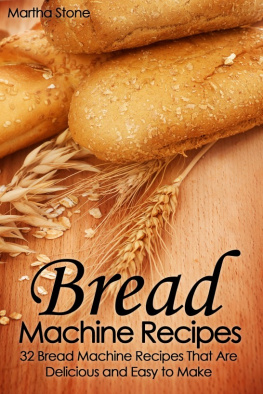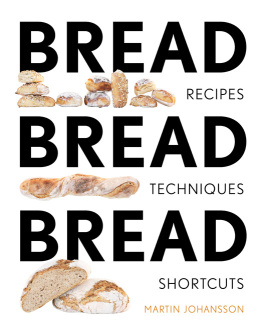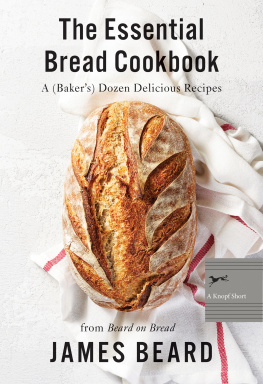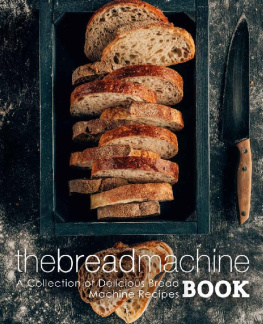All rights reserved.
eBooks are not transferable and cannot be given away, sold or shared.
No portion of this book may be reproduced or transmitted in any form or by any electronic or mechanical means, including photocopying, faxing, forwarded by email, recording or by any information retrieval and storage system without permission of the publisher, except where permitted by law, as this is an infringement on the copyright of this work. Brief quotations within reviews or articles are acceptable.
This is not medical advice and Lisa Pietsch is not a health care professional. Please consult your doctor before changing your diet or nutrition plan.
Ezekiel Breads
 In addition to its high-fiber, high-protein, and low glycemic factor, making your own Ezekiel style bread at home allows you to leave out the soy that is found in the commercially processed versions as well as make sure there are no additives.
In addition to its high-fiber, high-protein, and low glycemic factor, making your own Ezekiel style bread at home allows you to leave out the soy that is found in the commercially processed versions as well as make sure there are no additives.
My family and I love Ezekiel bread. We try to eat whole, healthy foods, and stay away from overly processed items. Having blood sugar issues and a diabetic father, I know that processed breads are terrible on our systems so I started buying Ezekiel 4:11 Bread. Ezekiel bread is bread made with sprouted grains and legumes. Now, I wasnt there, but as I understand it, the name Ezekiel Bread is based on an historic reference to the origin of the recipe. Apparently there was a siege and a lot of people were worried about how theyd survive it so their God recommended to a fellow named Ezekiel that they make their bread this way. Since they valued his input, being their God and all, they tried the recipe. As it happened, it did sustain them.

 The big attraction to this Ezekiel style bread recipe Im sharing with you here is the protein and fiber content. While it isn't gluten free, its combination of grains and legumes provides a complete vegetarian protein. The protein and fiber content of this bread make it worlds different from the processed breads much of our society eats today. It is also a low-glycemic food so diabetics and those who are insulin resistant like me, can eat it without seeing their blood sugar spike and then nose-dive. For those who have thyroid issues, the soy found in store-bought versions of this bread could be dangerous as soy is believed to interact unfavorably with thyroid medications. My version isnt flourless, so if you have sensitivities to grains and flours, this is not for you.
The big attraction to this Ezekiel style bread recipe Im sharing with you here is the protein and fiber content. While it isn't gluten free, its combination of grains and legumes provides a complete vegetarian protein. The protein and fiber content of this bread make it worlds different from the processed breads much of our society eats today. It is also a low-glycemic food so diabetics and those who are insulin resistant like me, can eat it without seeing their blood sugar spike and then nose-dive. For those who have thyroid issues, the soy found in store-bought versions of this bread could be dangerous as soy is believed to interact unfavorably with thyroid medications. My version isnt flourless, so if you have sensitivities to grains and flours, this is not for you.
Now, Im neither a religious leader nor a doctor so please dont take my word for any of this. Feel free to check with your religious and/or medical professionals if any of this could be an issue for you.
I can tell you why I like this bread. It is hearty, flavorful, filling, doesnt mess with my blood sugar and doesnt mess with my thyroid. Its just plain good.
A loaf of Ezekiel bread at your local health food store will set you back about $4-5. With only twelve slices, I felt that was pretty costly and started scouring the internet for a good recipe I could make at home in my bread machine.
Yes, I said bread machine. If you have the time to mix, knead, rest, knead, rest and bake then Im happy for you. Personally, I like being able to put everything in my bread machine and then pull out a finished product an hour and a half later.
The first bread machine Ezekiel bread recipe I found involved a two-day process.
WHAT?
Yes, but I really wanted a good recipe so I got started with it.
 I soaked one tablespoon each of white beans, red beans, lentils, two tablespoons of barley, and two tablespoons of millet overnight in a cup of water. The next day, I blended them in a blender with an additional cup of warm water. Then I poured the blended mixture into my bread machine pan and added two tablespoons agave nectar, two tablespoons virgin olive oil, two teaspoons salt, one and a half cups bread flour, one cup whole wheat flour, one half cup spelt flour, one tablespoon wheat gluten, and three teaspoons yeast.
I soaked one tablespoon each of white beans, red beans, lentils, two tablespoons of barley, and two tablespoons of millet overnight in a cup of water. The next day, I blended them in a blender with an additional cup of warm water. Then I poured the blended mixture into my bread machine pan and added two tablespoons agave nectar, two tablespoons virgin olive oil, two teaspoons salt, one and a half cups bread flour, one cup whole wheat flour, one half cup spelt flour, one tablespoon wheat gluten, and three teaspoons yeast.
I tried this recipe and it was good but heavy and moist, not the same texture as the Ezekiel Bread youd buy in a store. The flavor was excellent and it cost a fraction of what a commercially prepared loaf would cost at the store. For the price of two loaves from the store, I have enough supplies to bake about 10 loaves at home. That works out to about $1 a loaf. You can't get that price on Wonder Bread, never mind something healthy.
I didnt just leave it at that though.
Oh, no.
I didnt stop with good .
Since Ive started my little journey with Ezekiel, I've discovered many little tricks that make for a very simple recipe and much lighter bread. I've since made cranberry/orange and cranberry, raisin, and date variations that made amazing breakfast breads. Using the regular recipe, without adding fruit, I've made excellent English muffins for McMuffin style sandwiches, larger ones for hamburger and sandwich buns, pizza crusts, pita bread, bagels, cinnamon rolls and even donuts!
Now with all that said, lets get started with some beans and then dive into some recipes for the basics and some of the fancier items that just make beans worth eating!

Sprouting Your Beans
 For many, eating breads can be difficult. Oh, yes, its delicious and delightful, and then it happens drowsiness, gas, bloating, joint swelling and starch hangovers. Then we wonder why we ever made the choice to surrender to such self-abuse.
For many, eating breads can be difficult. Oh, yes, its delicious and delightful, and then it happens drowsiness, gas, bloating, joint swelling and starch hangovers. Then we wonder why we ever made the choice to surrender to such self-abuse.
For others, eating beans can be difficult. You can make some great dishes with beans, theyre high in protein and fiber, good for your heart, and add color and flavor to meatless Mondays. Unfortunately, they can be difficult to digest. The gas can be painful (and embarrassing too).
Soaking beans and legumes neutralizes the natural enzyme inhibitors I them kick starts the production of many beneficial enzymes. As they soak, enzymes, lactobacilli and other helpful organisms spring to life to break down the phytic acid that makes them so difficult to digest. Soaking beans overnight removes most of the phytic acid. Soaking, fermenting and sprouting also break down gluten and other proteins into smaller components that are more easily absorbed by the human body.
Sprouts are more than the beans they were. When they sprout, they become a living, enzyme-rich food that is nutritious and low in calories. Vitamin A increases, lots of B vitamins will increase 5-10 times, and vitamin C increases too. The protein is more easily digestible as the sprouting creates new enzymes and phytochemicals. Unsprouted beans and legumes can be dangerous, but sprouted, they become pre-digested superfoods.










 In addition to its high-fiber, high-protein, and low glycemic factor, making your own Ezekiel style bread at home allows you to leave out the soy that is found in the commercially processed versions as well as make sure there are no additives.
In addition to its high-fiber, high-protein, and low glycemic factor, making your own Ezekiel style bread at home allows you to leave out the soy that is found in the commercially processed versions as well as make sure there are no additives.
 The big attraction to this Ezekiel style bread recipe Im sharing with you here is the protein and fiber content. While it isn't gluten free, its combination of grains and legumes provides a complete vegetarian protein. The protein and fiber content of this bread make it worlds different from the processed breads much of our society eats today. It is also a low-glycemic food so diabetics and those who are insulin resistant like me, can eat it without seeing their blood sugar spike and then nose-dive. For those who have thyroid issues, the soy found in store-bought versions of this bread could be dangerous as soy is believed to interact unfavorably with thyroid medications. My version isnt flourless, so if you have sensitivities to grains and flours, this is not for you.
The big attraction to this Ezekiel style bread recipe Im sharing with you here is the protein and fiber content. While it isn't gluten free, its combination of grains and legumes provides a complete vegetarian protein. The protein and fiber content of this bread make it worlds different from the processed breads much of our society eats today. It is also a low-glycemic food so diabetics and those who are insulin resistant like me, can eat it without seeing their blood sugar spike and then nose-dive. For those who have thyroid issues, the soy found in store-bought versions of this bread could be dangerous as soy is believed to interact unfavorably with thyroid medications. My version isnt flourless, so if you have sensitivities to grains and flours, this is not for you. I soaked one tablespoon each of white beans, red beans, lentils, two tablespoons of barley, and two tablespoons of millet overnight in a cup of water. The next day, I blended them in a blender with an additional cup of warm water. Then I poured the blended mixture into my bread machine pan and added two tablespoons agave nectar, two tablespoons virgin olive oil, two teaspoons salt, one and a half cups bread flour, one cup whole wheat flour, one half cup spelt flour, one tablespoon wheat gluten, and three teaspoons yeast.
I soaked one tablespoon each of white beans, red beans, lentils, two tablespoons of barley, and two tablespoons of millet overnight in a cup of water. The next day, I blended them in a blender with an additional cup of warm water. Then I poured the blended mixture into my bread machine pan and added two tablespoons agave nectar, two tablespoons virgin olive oil, two teaspoons salt, one and a half cups bread flour, one cup whole wheat flour, one half cup spelt flour, one tablespoon wheat gluten, and three teaspoons yeast.
 For many, eating breads can be difficult. Oh, yes, its delicious and delightful, and then it happens drowsiness, gas, bloating, joint swelling and starch hangovers. Then we wonder why we ever made the choice to surrender to such self-abuse.
For many, eating breads can be difficult. Oh, yes, its delicious and delightful, and then it happens drowsiness, gas, bloating, joint swelling and starch hangovers. Then we wonder why we ever made the choice to surrender to such self-abuse.